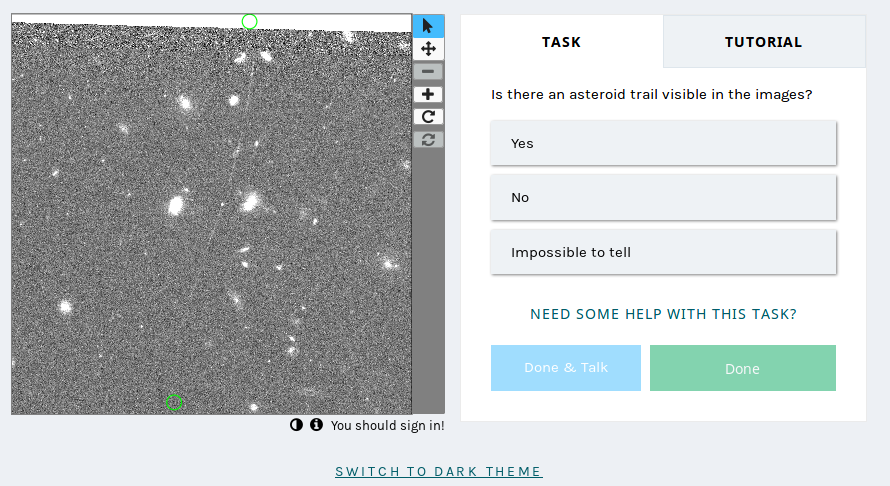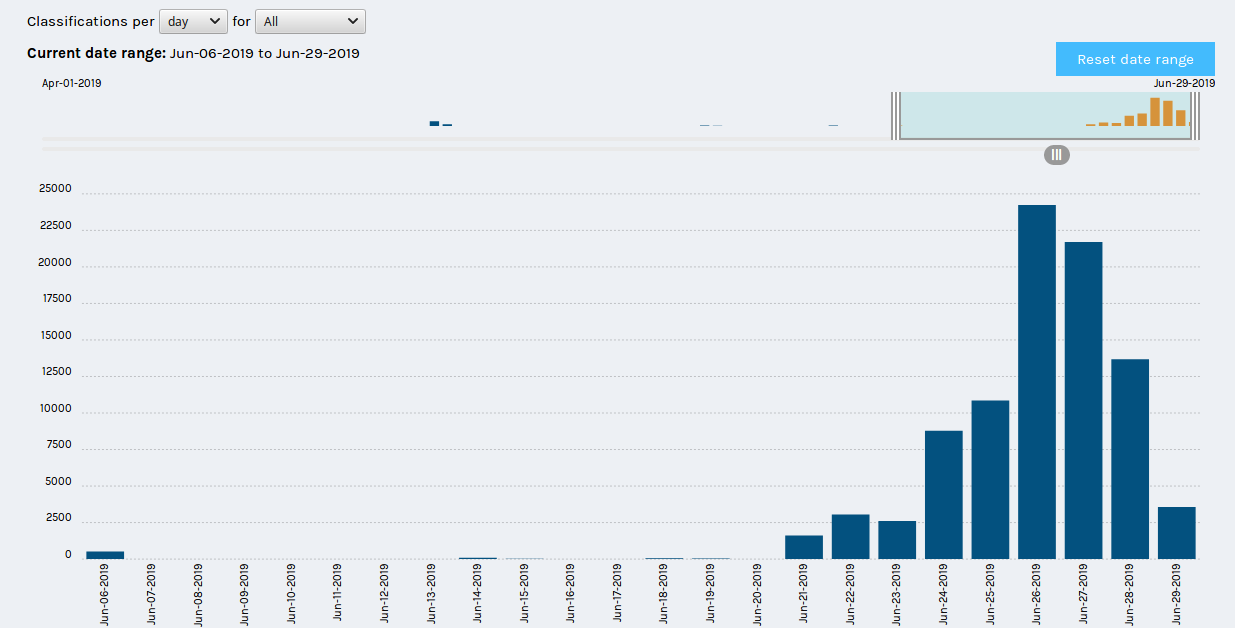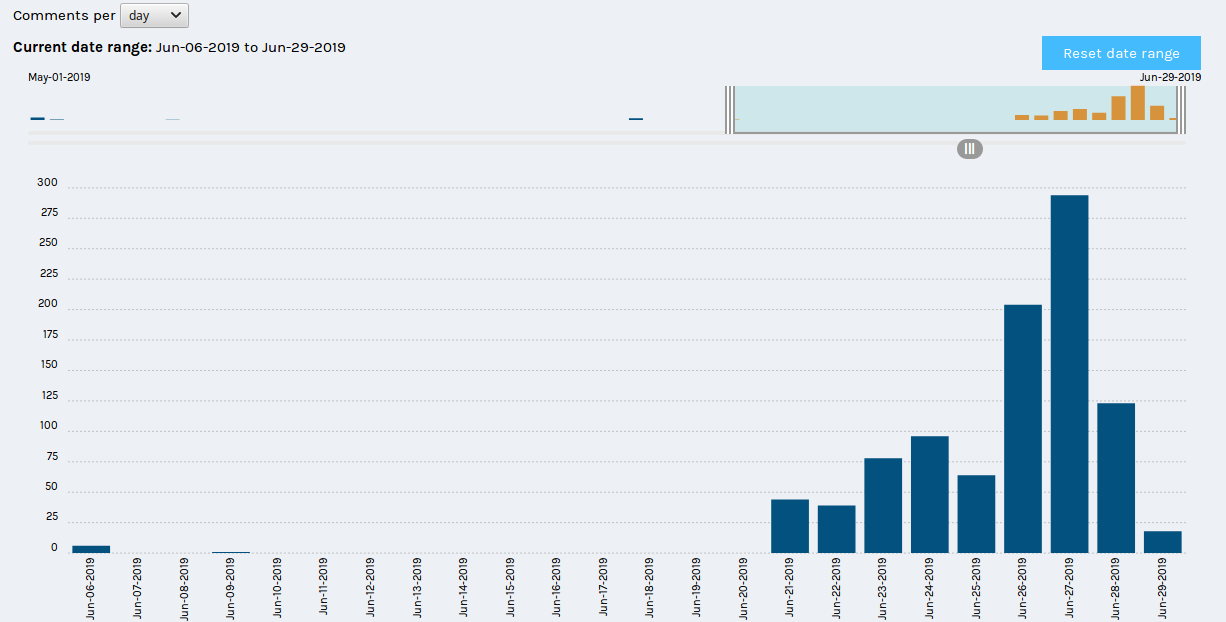Looking for asteroids - the project "Hubble Asteroid Hunter"

The Minor Planet Center (MPC) of the Smithsonian Astrophysical Observatory (SAO) and NASA Aerospace Agency launched the Hubble Asteroid Hunter project, with which any big-eyed computer or tablet user can help astronomers find tracks of new asteroids and contribute to the process. learning neural network.
Link to the project website
The results of the work of volunteer users will be used by the Minor Planet Center to calculate the orbits and update the asteroid ephemeris, as well as to train neural networks working with an archive of photos of the observatory .
')
In the Solar System, asteroids are mainly concentrated in the Main Belt, located between the orbits of Mars and Jupiter.
Today, more than 700 thousand asteroids are known and their number is constantly growing.
For 28 years of operation, the Hubble telescope sent hundreds of thousands of images to Earth, this is a huge array of data that needs to be processed.
A couple of years ago, watching very distant galaxies, the light from which came to Earth for billions of years, the Hubble space telescope accidentally discovered several asteroids that are a few dozen or hundreds of millions of kilometers from our planet and created curved or S-shaped tracks on photos, and the number of tracks reached twenty pieces in one image.

This prompted a team of astronomers, planetary scientists, and software developers from the European Space Agency and other research institutes to launch the new science project Hubble Asteroid Hunter based on the world's largest civil science portal Zooniverse .
The project database contains archival images of the “Hubble” telescope, which were selected so that the epoch of observation and the size of the studied part of the sky for these images could be compared with the calculated asteroid orbits and predict their appearance in the images.
Anyone with Internet access, good vision, an understanding of the basics of astronomy, and simply a desire to help can take part in the project.

To get started, you must register on the site and read the rules of work.
The aim of the work is to search for asteroid tracks in the photographs and mark them.
There is a little training on how to look and what to mark, also on the site, you can change topics - choose light or dark, so that your eyes are more comfortable.



You will be shown photos in which you will be asked to mark the tracks of the asteroids (if available).

The images were selected in advance in such a way as to compare the observation times and the calculated orbits of the asteroids, so that with high probability you can find tracks of asteroids that were not known before that time.
The results of the work of users (who are still not very involved in this project) will be used by the Center for Small Planets of the International Astronomical Union to calculate orbits and update asteroid ephemeris, which will help to accurately predict their movement.
In addition, the marked track data will help train neural networks to recognize similar objects in images automatically. So far, scientists cannot do without human participation.
Current project statistics can be found here .

Classification Stats

Talk stats

Source: https://habr.com/ru/post/458158/
All Articles